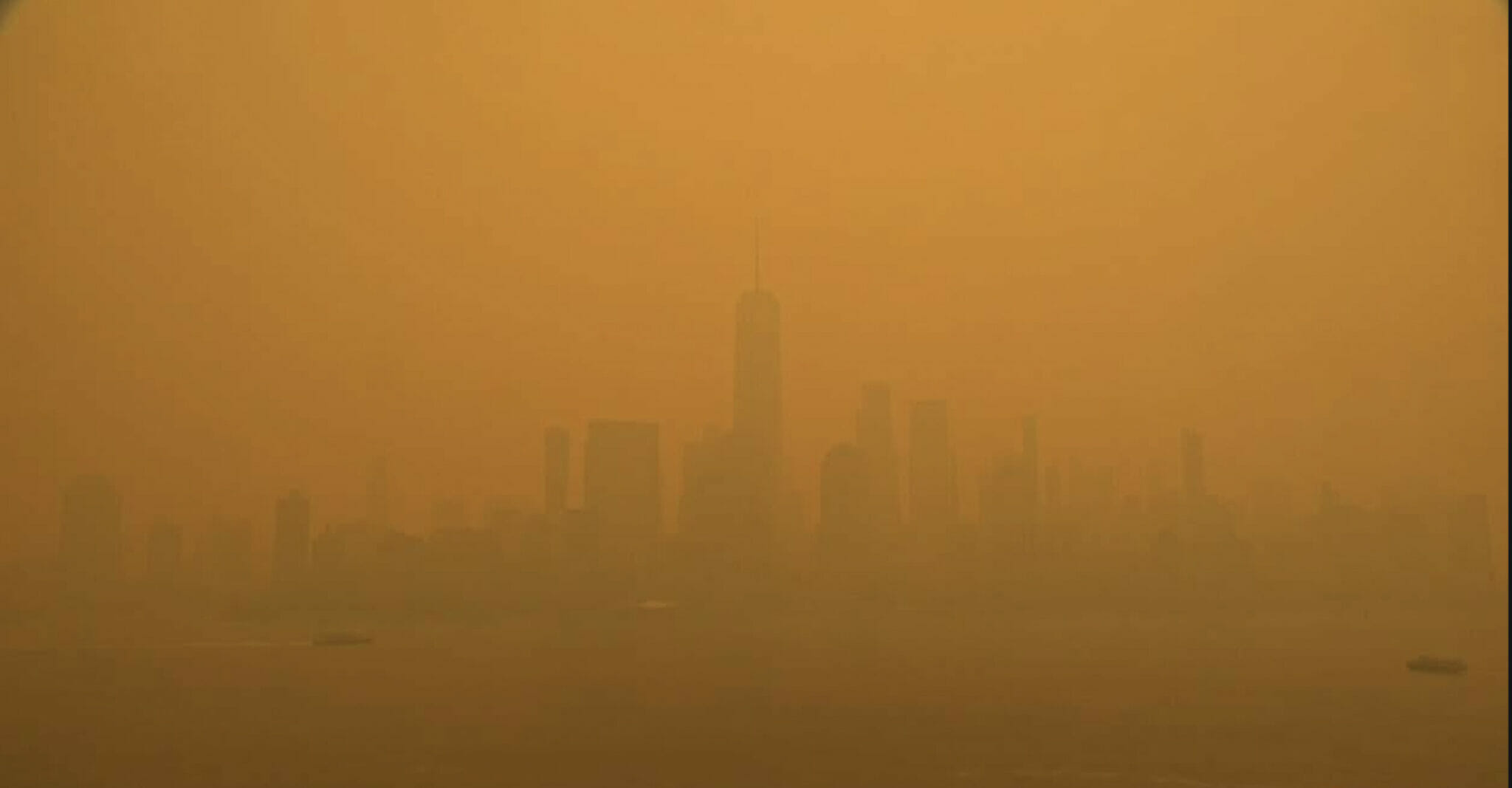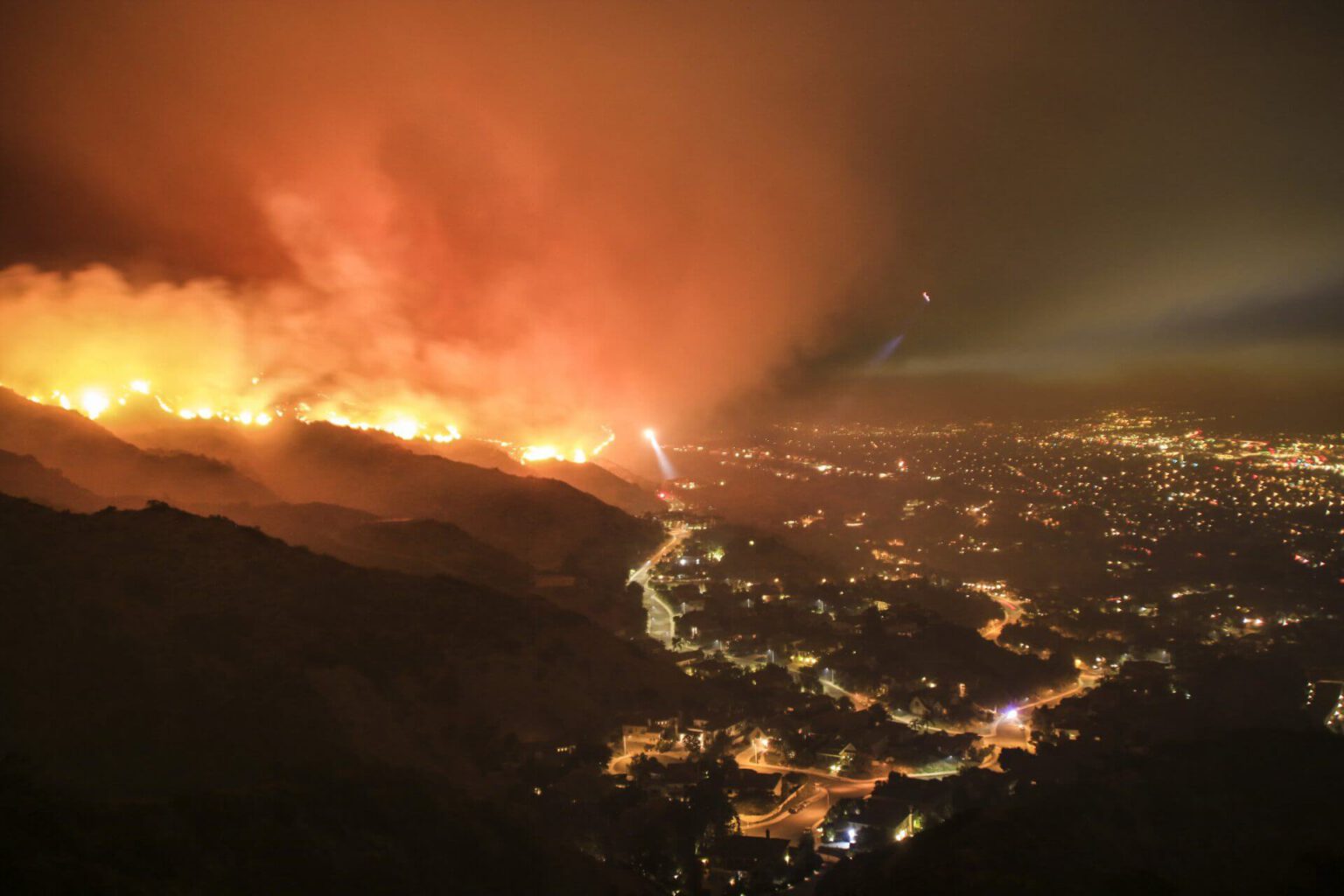Wildfire smoke from Canada turned the skies over New York City a deeply unhealthy orange and gray on Wednesday as climate change continues to ravage more and more of the planet. Since many of the world’s news organizations have journalists based in New York, this could be a pivotal moment in media coverage of the climate story. There’s nothing like seeing one’s own surroundings upended to bring home the inescapability of the climate crisis and the urgency of implementing solutions, however politically difficult those solutions might appear.
New York City’s mayor Eric Adams warned that more of the same lies in store and that strong climate action is imperative. “This may be the first time we experienced something like this of this magnitude,” Adams said at a press conference on Wednesday, when New York’s air quality was the second worst on earth. “Let’s be clear,” he added, “it’s not the last. Climate change is accelerating these conditions and we must continue to draw down emissions, improve air quality, and build resilience.”
The best initial coverage of the smoke afflicting New York — and Philadelphia, Washington, D.C., and other major US cities — noted that the connection between climate change and wildfires is scientifically well established. “Human-caused climate change has exacerbated the hot and dry conditions that allow wildfires to ignite and grow,” CNN reported. NBC News quoted a Canadian fire scientist saying, “Climate change is definitely doing its work.” Calling the fires “an ominous sign of the ill effects of climate change,” The Washington Post said the smoke pouring across the border into the US shows that “climate change’s effects know no borders….” (Journalists who seek more background on climate change and wildfires can consult CCNow’s “Extreme Weather” guide and “Making the Climate Connection” guide. Also, see Climate Central’s “Wildfire Weather” report.)
This story is an example of the acute impacts of climate change, because also well established are the health risks of the toxic smoke now afflicting tens of millions of Americans. “Wildfire smoke is 10 times more harmful to children’s respiratory health than other types of air pollution,” according to Dr. Lisa Patel, a pediatrician and the executive director of the Medical Society Consortium on Climate and Health.
As journalists cover this story going forward, it’s worth bearing in mind that this kind of foul air “is what a huge percentage of the world’s people breathe every single day of their lives,” noted writer Bill McKibben. The air is thick and dark in New Delhi, Beijing, Shanghai, and other cities mainly because of burning fossil fuels, not wildfires, McKibben added — but it’s all part of the same climate crisis.
News organizations that aren’t yet making the climate connection to this week’s smoke are, unfortunately, likely to have abundant opportunities to do so in the months ahead. Christine Wiedinmyer, an atmospheric chemist at the University of Colorado Boulder, told Scientific American, “I’m concerned about what this means for the rest of the season. We’re only in June — early June. And so there’s a possibility that we could be in for a smoky summer across the country.”
Journalists in New York City and other pollution-plagued cities no longer even need to look out the window to find the climate story. Climate change is in our houses and in our lungs now. It will keep getting worse until the fossil fuels fanning the flames are quit.
From Us
New CCNow job! We’re hiring a Director of Training to develop our overall training strategy for newsrooms in the US and around the world. The position includes assessing journalist and newsroom needs, developing and executing programs to provide training and ongoing editorial support, and creating measurement and impact criteria for said programs. Apply by June 20.
Noteworthy Stories
Fossil fuel accountability. The Guardian’s series “Big Oil Uncovered” delves into holding the fossil fuel industry and its enablers accountable for the climate crisis, while also investigating attempts to hinder the clean energy transition. The inaugural story examines the first-ever constitutional climate lawsuit in the US, which goes to trial next week, part of what experts say could be a pivotal shift in climate litigation. By Dharna Noor at the Guardian…
Underwater. Stronger storms turbocharged by climate change, a strained insurance industry, and ineffective regulations are leaving millions of low-income Florida homeowners at risk of not having adequate insurance. A lack of requirements to disclose flood risks to home buyers and outdated FEMA flood maps means many are unaware of their risks. By Manuel Bojorquez and Analisa Novak at CBS News…
Water woes. Arizona’s decision last week to curb residential construction due to limited water supplies illustrates how climate change is disrupting life in the American West. Drought and water overuse mean farmers, manufacturers, and developers are competing for resources. By Joshua Partlow, Brady Dennis, and Isaac Stanley-Becker at The Washington Post…
Rejuvenating the Amazon. Replanting trees in areas devastated by illegal logging and ranching in the Brazilian Amazon could lead to major climate benefits, because trees store carbon dioxide. But reforestation efforts face major challenges, including threats from land-grabbers and arson attacks. By Jake Spring at Reuters…
Fighting back. Four activists from the youth-led, grassroots network Pacific Climate Warriors representing Fiji, Samoa, and the Marshall Islands speak about how they are responding to the climate crisis. “Indigenous knowledge is climate science. But there’s a misconception that we’re waiting for the experts to come help us. In reality, we are the experts,” said one. By Taylor Weik at Teen Vogue…
New Climate Term: “Greenhushing”
“Greenhushing” refers to the phenomenon that companies downplay their sustainability focus to avoid criticism or backlash over their environmental and climate initiatives. The term gained momentum last autumn following backlash from conservatives towards environmental, social, and governance initiatives. Read more at The New York Times.
Resources & Events
Summer info. Climate Central has released their “2023 Summer Package” with data, information, and story angles for reporting on extreme weather. Read it.
Obstacles. A new report by the Sabin Center for Climate Change Law highlights local and state restrictions against solar and wind projects that result in the cancellation, delay, and downsizing of projects. Learn more.
Accountability. The Global Investigative Journalism Network has a new guide, “Holding Your Government Accountable for Climate Change Pledges.” See the guide.
Investigative journalism. The Environmental Reporting Collective, which collaboratively investigates environmental and climate crimes, is holding a meeting for journalists and others to pitch ideas on topics to investigate in the coming year. June 20. RSVP.
Jobs, etc.
Jobs. The Associated Press is hiring a climate reporter (Spanish language). Sierra Magazine is recruiting a story editor.
Grants. Earth Journalism Network is offering grants to Indigenous and ethnic minority journalists for in-depth stories highlighting climate justice, biodiversity, and the rights of Indigenous peoples. Apply by June 19. Learn more.


